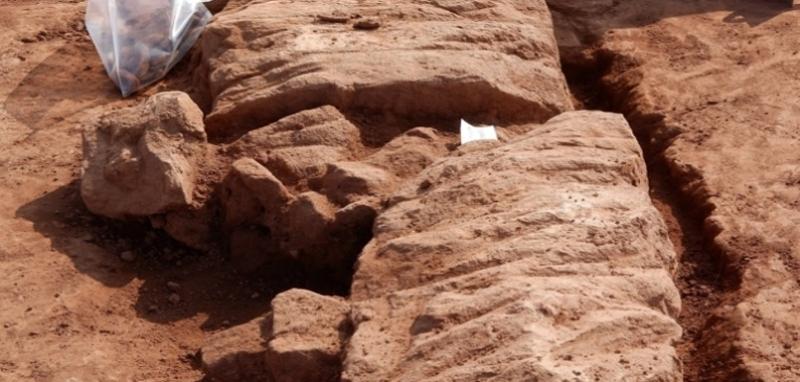Eastern Green Week 10: a theory confirmed
The excavations at Eastern Green, south of the A45, Coventry, were carried out by L – P : Archaeology (now part of MOLA) on behalf of Orion Heritage and Hallam Land Management. You can read more about the site and the progress of the excavations through these weekly update blogs.
If you attended the open day or read last week's blog, you'll know that our theory for why so little of the Roman building remains at Eastern Green is that the majority of the stone walls were robbed out to be reused locally, and that hundreds of years of ploughing then destroyed most of what was left.
Well, it looks like this theory could be correct! The law of archaeology is that you will always find something good right at the end of excavations and that is the case here! As we come towards the end of this stage of the project, we have excavated some large pieces of masonry stone which are heavily scarred from ploughing.

This is the remains of the north-most wall of the building and is a different style of construction - instead of using rubble like the other walls, these foundations used large pieces of masonry stone. This evidence of different stages of construction, or rebuilding of walls, corresponds with the different roofing materials we have discovered!

The scars in the stone are clear evidence of intensive ploughing activity, medieval ridge and furrow, as well as early modern and modern ploughing. We think that the Roman ground level at Eastern Green was quite a lot higher than it is today, which means it would have taken some time for the plough blades to reach these stones, but we can see the force of the plough which carved deep gouges into the stone. This shows how easily building material would have been broken up by ploughing, and gradually spread around the site. We have also found that the Roman foundations at Eastern Green are not all the same depth - this is related to the underlying geology. Basically, they dug until they reached the bedrock, which is higher in some parts of the site than others.
In some parts of the building, we don't even have the foundations left - this isn't caused by ploughing. But a clue as to what has happened is robber trenches. These are trenches which originally contained wall foundations, but at some point in the past, the useful masonry stone has been taken away and reused in another building locally. At Eastern Green, this was likely to have been sometime shortly after the Roman farmstead was abandoned in the 4th century.

